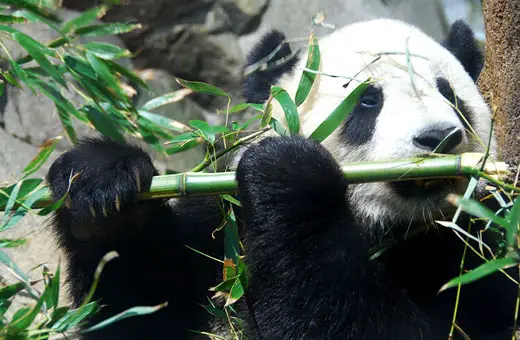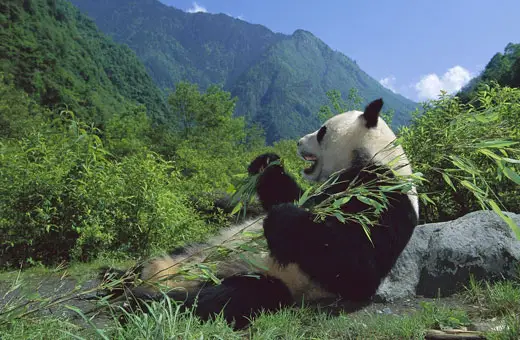Giant Panda
Giant Panda’s are much loved across the world and are one of the worlds most talked about endangered species. These powerful mammals live exclusively in China and can be found in a handful of different areas that are unfortunately isolated from one another making breeding harder than it should be. Giant Pandas need to eat a vast amount of bamboo in order to keep in tip top shape and because industry and human expansion is pushing the pandas in smaller isolated areas it is becoming increasingly harder for the pandas to thrive and as a result the wild population is rapidly declining.
The Giant Panda is almost an icon for endangered wildlife and you would have to search far and wide for someone who doesn’t recognize these beautiful creatures. Instantly recognizable the Giant Panda is covered in think predominantly white fur with black marking around their eyes, arms, shoulders, legs and ears. The Giant Panda is actually classed as a type of bear and it resembles other bears in the shape of its body which in heavy built with short limbs and a almost non-existent tail.

A Giant Panda feeding on bamboo
As the Giant Panda is a type of bear its digestive system is actually that of a carnivorous species that has adapted to life as a vegetarian. Not only has the digestive system of the Giant Panda adapted to a vegetarian diet, its diet is also reflected in its teeth which are wide and flat and do a fantastic job of crushing bamboo. The Giant Panda also has a unique writs bone and a extra ‘thumb’ that helps it manipulate bamboo canes.
The unique diet of the Giant Panda forces the Giant Panda’s to work much harder than most bears when it comes to getting sufficient nutrients that are essential to a healthy lifestyle. Because bamboo is not very nutritious the Giant Panda’s have to consume a gigantic amount of bamboo and while there is no shortage of bamboo it does mean that the pandas have to eat for around 14 hours straight to get their fill only stopping to sleep or travel very, very short distances. Unlike most bears the Giant Panda does not hibernate in the winter, this is because of the lack of nutrition Giant Pandas gain from bamboo is by no means enough to build up fat reserves.

Giant Panda's consume a vast amount of bamboo
The Giant Panda’s spend most of their lives living alone, usually only socializing throughout march – may which is their breeding season. The male Giant Panda’s are fiercely territorial and will often compete for multiple female mates that reside inside and just outside their territory.
The lifespan of a wild Giant Panda is around 15 – 20 years with both male and female pandas reaching sexual maturity around the age of 6 years. The female Giant Panda will give birth to usually just 1 cub per year after successful mating, if twins or more are born the mother will abandon one unfortunate youngster and focus solely on the other. The baby pandas are extremely vulnerable as they are born in very early development and haven’t even developed sight. The youngsters will be looked after by their mother for up to 9 months but will occasionally stick around for up to 18 months before departing on their own journey.


